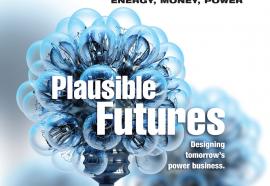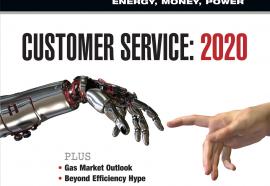Pacific Gas and Electric
Low-Income Reality Check
Evaluating the impact of dynamic pricing.
Are residential time-of-use prices only effective for middle class households, or do low-income customers benefit too—as authors Lisa Wood and Ahmad Faruqui asserted in their October 2010 article? Data from pilot programs show that low-income customers exhibit a reduced ability to benefit from dynamic pricing. Demand response programs should accommodate the realities of low-income customers’ consumption patterns.
Smart Grid in America and Europe (Part II)
Past accomplishments and future plans.
Policy makers in the E.U. and the United States are taking different approaches to facilitating smart grid development. While both regions are setting standards that the rest of the world likely will follow, they also face difficult challenges in resolving issues around cost recovery, customer engagement and workforce preparedness.
Vendor Neutral
(February 2011) Silver Spring integrates Itron meters; PECO picks Sensus; AT&T and Elster sign agreement; PSEG Fossil selects ABB for a multi-phase controls project; Trilliant secures equity financing and wins Burbank ARRA contract; Navigant buys BTM Consult; GE acquires SmartSignal; plus contracts and announcements from Survalent, Mitsubishi Motors, AES Energy Storage and others.
Utility-Customer Partnerships
Engaging the consumer takes on new meaning.
Customer backlash over dynamic pricing and the smart-grid caught the industry unprepared. CIOs and top customer specialists share their strategies for engagement and attaining consumer satisfaction.
People (September 2010)
Extreme Efficiency
Performance standards are a valid idea—if targets are achievable.
Performance standards are a valid and necessary idea to drive conservation, but only if targets are realistic and achievable. So far, success has been determined by program rationality. A uniform, market-based approach would give retailers flexibility to spur innovation.
People (August 2010)
Vendor Neutral
T&D and Smart Grid
The ZigBee Alliance and the Wi-Fi Alliance entered an agreement to collaborate on wireless home area networks (HAN) for smart-grid applications. The initial focus of the collaboration will be ZigBeeSmart Energy Profile 2.0, which is the next-generation energy management protocol for smart grid-enabled homes based on today’s successful ZigBeeSmart Energy Profile. The ZigBeeSmart Energy Profile 2.0 is expected to be extended to operate over Wi-Fi technology as a result of the collaboration.








